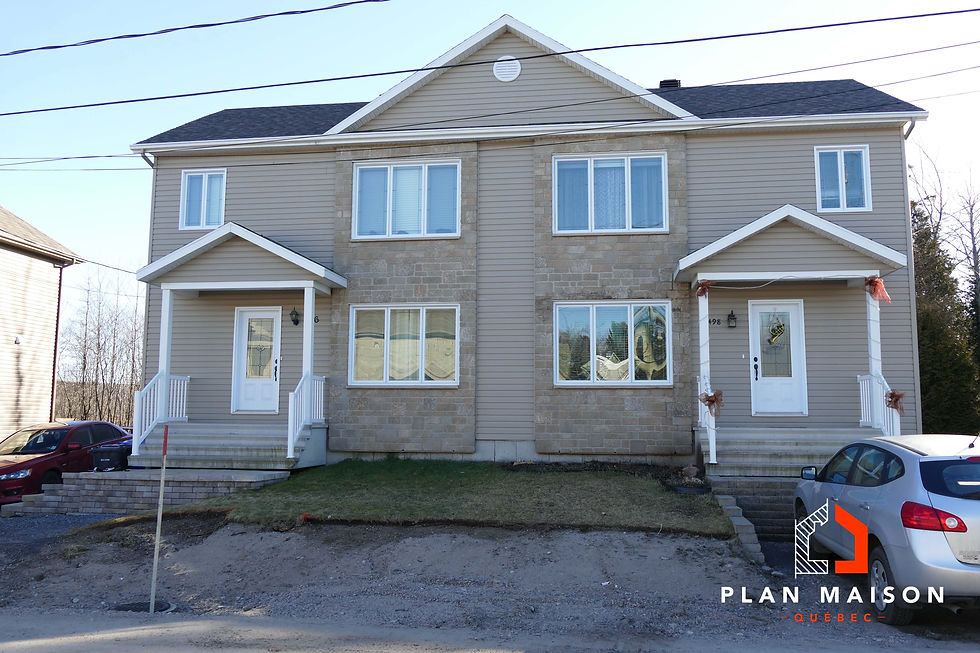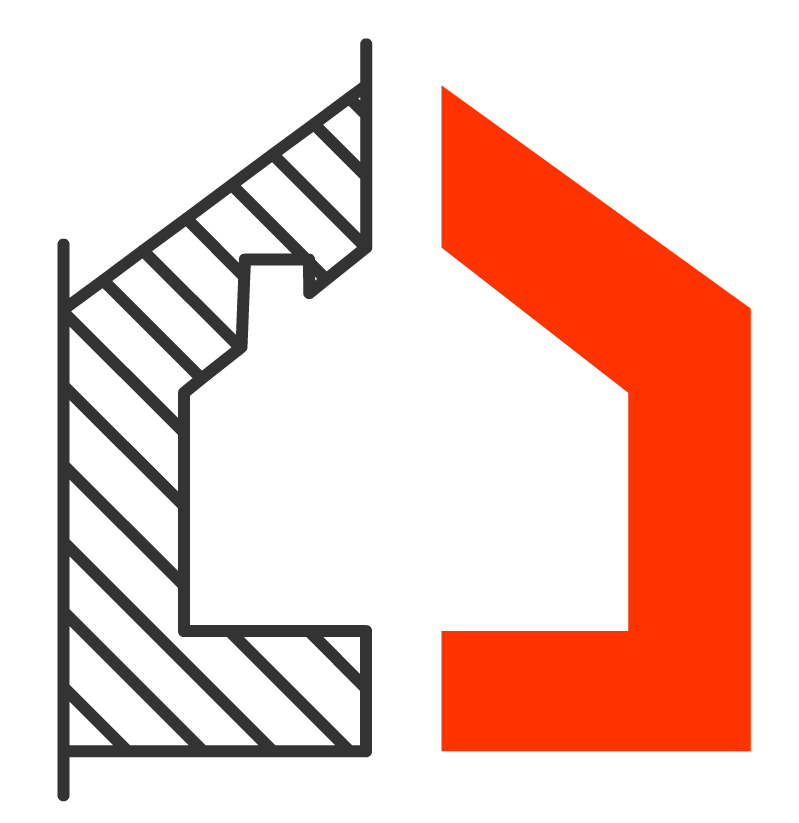What is the minimum down payment for purchasing a multi-unit home?
- coraliefortin076
- Aug 1
- 5 min read

Investing in a multi-unit building is attracting more and more Quebecers looking to build a sustainable real estate portfolio, generate passive income, or diversify their portfolio. However, before designing plans for your future rental property with Plan Maison Québec, it's essential to understand the financing requirements for this type of project—starting with the minimum down payment required for a multi-unit home.
This initial contribution is often the first obstacle or lever for a real estate project. For a rental investment to be viable, you must understand all aspects of it, from the basic rules to the exceptions and optimization strategies.
What is a down payment in a real estate project?
Before detailing the percentages required depending on the type of property, it's important to understand the concept of a down payment. This is the amount you must provide out of pocket when purchasing a property, without the help of a mortgage. It's a sort of "entrance ticket" to real estate acquisition, reducing the total amount you need to borrow.
This amount demonstrates to your lender that you are financially committed to the project. In return, it reduces the risks for them and may even allow you to obtain better financing terms.
Below the 20% threshold, mortgage loan insurance is generally mandatory. This protects the lender in the event of default, but it represents an additional cost for the buyer. In other words, your down payment influences the total cost of your project, the structure of your financing, and the level of risk perceived by financial institutions.
At Plan Maison Québec, we always encourage our clients to consider the down payment from the outset, alongside the design of their house, cottage or rental property plans.

Rules depending on the type of building and the status of the owner
The minimum percentage required for the down payment varies according to two main criteria: the type of building (duplex, triplex, multi-unit) and the occupancy status (owner-occupant or pure investor).
The case of the duplex
If you buy a duplex and live in one of the units, the down payment can be as low as 5% for the portion of the price up to $500,000. Above this amount, a 10% rate applies. However, if you do not live in the building, a minimum down payment of 20% will be required.

Triplex and quadruplex
For a triplex or fourplex, the owner-occupant can provide a minimum down payment of 10%, with mandatory mortgage insurance. If the buyer is not an occupant, the down payment increases to 20%.
Multi-unit dwellings of 5 or more units
Buildings with 5 or more units are considered commercial properties. The down payment is generally 25%, but can be reduced to 15% if CMHC mortgage insurance is taken out. The project is then evaluated as a rental business: net income, financial ratios, location, and manager experience are taken into account.

Why does the down payment vary so much?
The variation in required down payments is not simply a business rule. It stems from a specific financial logic: the higher the risk level for the lender, the higher the required down payment threshold. This dynamic allows financial institutions to protect themselves against defaults and potential losses.
The type of property is a determining factor. A duplex or triplex, when owner-occupied, is often considered more stable. Owner-occupants tend to maintain the property better, limit vacancies, and proactively manage tenants. This reduces the perceived risk, allowing for a lower down payment, sometimes as low as 5%.
In contrast, a building with five or more units falls into the commercial investment category. In this case, the property is analyzed as an income-generating business. The lender will evaluate leading financial indicators: net operating income (NOI), debt service coverage ratio (DSCR), historical occupancy rate, location, and even the investor's experience in property management.
If the project is deemed risky—for example, in a remote area with a high vacancy rate or unstable rental income—the required down payment may be higher than the basic thresholds.
Another influential criterion: occupancy status. A buyer who does not intend to live on-site is perceived as more emotionally detached and potentially less involved in day-to-day management. This often justifies a higher down payment, around 20 to 25%, to offset this risk.

Finally, the buyer's profile also comes into play. A well-capitalized investor with an excellent credit history and solid experience could negotiate a lower down payment or benefit from more flexible terms. Conversely, a borrower with an atypical profile (variable income, limited liquidity, no investment history) will often have to provide a higher down payment to reassure the lender.
Thus, the down payment isn't just a matter of numbers. It reflects a comprehensive analysis of the project's soundness, the owner's management skills, and the risks specific to each type of building. At Plan Maison Québec, we integrate these considerations from the design phase of your project to ensure that your plan is as financially credible as it is architecturally effective.
Mortgage insurance: ally or constraint?
Mortgage loan insurance is often misperceived as a financial constraint. However, it allows many buyers to access homeownership or investment opportunities with a down payment of less than 20%.
In concrete terms, this insurance protects the lender against payment default. In exchange, you pay a premium calculated based on your down payment, generally between 2.8% and 4% of the borrowed amount. This cost can be included in your mortgage.
For buildings with 5 or more units, CMHC insurance can also reduce the required down payment from 25% to 15%, representing substantial savings. It also provides access to better borrowing terms: lower rates, extended amortization periods, and more flexible approval.
That said, insurance is not a personal safety net. It does not directly cover you in the event of a payment problem. This is why it must be integrated into an overall investment strategy and not seen as an easy solution.
At Plan Maison Québec, we support our clients in this process, taking into account their budget, objectives, and the type of project they are aiming for, in order to align financial and technical aspects.

Integrated planning with Plan Maison Québec
Plan Maison Québec doesn't just draw up plans. We participate in the overall structuring of your real estate project, ensuring its viability from all angles: regulatory, architectural, and financial.
Our services include:
Design of personalized plans for multi-unit buildings
Compliance with municipal regulations
Budget estimates useful for your banking procedures
Optimized plans for rental profitability
Strategic support with our partners (brokers, engineers, etc.)
We believe that a good real estate project starts with a solid foundation, both in terms of design and financial planning.

Conclusion : minimum down payment for a multi-unit home
The down payment is a central element of any real estate project. It determines your ability to acquire, borrow, and successfully complete your rental investment. Each type of property—duplex, triplex, income property—has its own rules and opportunities.
With Plan Maison Québec, you benefit from comprehensive support to design plans that meet your ambitions, while taking into account the requirements of financial institutions. Our experts help you plan every detail so that your project is profitable, well-thought-out, and accepted by lenders.
Ready to start your project?



Comments